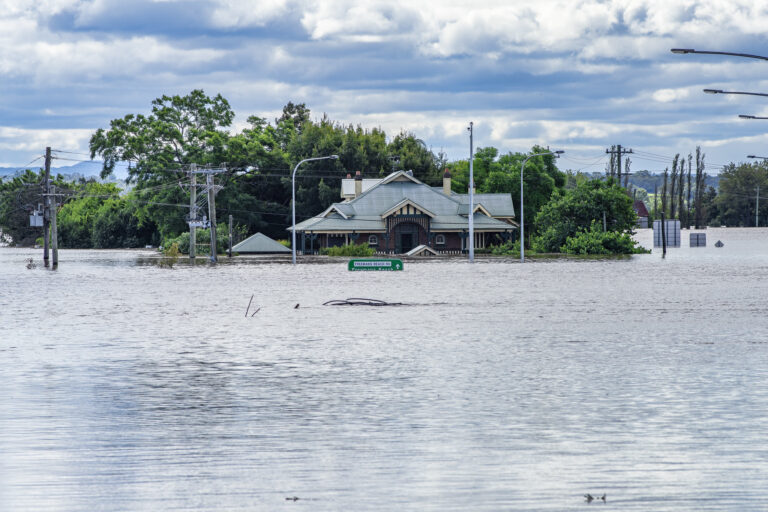In the 2022-23 Budget the Commonwealth Government has allocated up to $6 billion over the next two years for disaster relief for those affected by the recent floods in southern Queensland and northern New South Wales. Included in the support is direct grants to households and businesses and to local governments to partially compensate for losses of income and property. The announced programs provide another example of government assistance to affected households and businesses adversely affected by natural disasters, including floods, cyclones and bushfires.
Policy challenges
A principal reason for the provision of financial grants to those affected by natural disasters is to meet long-established society concerns for equity and avoidance of poverty.
Unfortunately, there can be unintended consequences of the short-term financial support for longer term outcomes. Undesirable long-term effects include: disincentives to take decisions to reduce the adverse effects of future natural disasters; and to lock-in poverty for some.
Balancing the short-term benefits and long-term costs of government assistance in times of natural disasters is a policy challenge with arguable answers. This article describes the policy context and objectives of temporary government assistance for those adversely affected by natural disasters, the conflicting short-term benefits and long-term costs of financial grants to affected households and businesses, and it offers some guidelines for future policy packages.
Context
The frequency of floods, cyclones, bushfires and other natural disasters, and the magnitude of adverse effects, vary from one location to another. Many areas are unaffected. That is, for both individuals and businesses, and for the nation, there are choices of location and investments to reduce the adverse effects of natural disasters.
Historical data provides a good guide to probabilities of natural disasters and their magnitudes across different locations. But as the adverse effects are on the tail of the probability distribution, there is imperfect information.
Climate change is projected to increase the frequency and magnitude of adverse effects of natural disasters in some locations.
As a general guide, households and businesses choose to locate in natural disaster-prone locations only if the expected benefits during good and normal times exceed the losses incurred during natural disaster times. Otherwise, locate in non-affected locations which offer similar expected net benefits over time.
Market forces generate price premiums for assets in locations largely exempt from natural disasters and which have similar other attributes. One consequence is that those with higher incomes choose higher priced and safer locations. The more natural disaster-prone locations with lower asset prices are home to a larger share of those with low incomes and wealth.
In a world of limited production inputs relative to demands, rational private households and businesses invest in natural disaster mitigation and adaptation to the point where the marginal benefits exceed the marginal costs. Examples of such investments include more robust buildings and other structures, and early warning systems. These investment decisions are also in the national interest.
Of course, natural disasters are just one of many adverse events which reduce the wellbeing of most businesses and households over their lifetime. Other examples include loss of employment and income during economic recessions, motor vehicle and other accidents, poor health, breakdown of family and other personal relationships, home fires and theft.
Governments operate a range of general policy interventions to provide a safety net to meet society equity objectives. These include a system of targeted transfer payments, a progressive income tax system, and provision of a basic level of education, health and other services for all. These equity policy interventions are available to people adversely affected by natural disasters.
Short-term government disaster assistance
The Commonwealth and State governments provide many sources of funds in the event of natural disasters. Governments directly fund emergency services, recovery outlays on government owned and operated infrastructure, and the provision of information. In addition, for many natural disasters they provide direct financial grants to affected households and businesses. My interest here is in the equity and efficiency effects of direct grants.
A key rationale for the direct payments to affected businesses and households is that of equity to replace some of the loss of income and assets. The special payments are in addition to general government redistribution schemes, including social security payments and provision of health and education services.
Against the short-term equity benefits, special payments for those in natural disaster locations are likely to have undesirable long-term national resource allocation efficiency and equity effects. The special payments reduce some of the private costs of natural disasters, and they increase the expected net benefits of location in a natural disaster-prone location. Crudely, a form of “socialise some of the costs while privatise the benefits.”
Over the longer term, government grants for households and businesses in natural disaster-prone locations reduce the incentives for some to relocate to a safer area and/or to undertake investments to mitigate the magnitude of adverse effects of future natural disasters. These changed decisions lead to higher costs in the future for society as well as for individuals and businesses directly affected. In addition, those on lower incomes are over-represented in high-risk areas, and they are more likely to choose not to relocate or invest in mitigation.
Finally, the outlays on special assistance for natural disasters mean a combination of higher taxation and lower expenditures on other government provided goods and services.
A policy package
Assuming continuation of some form of direct grants to households and businesses adversely affected by natural disasters for equity reasons, how could some of the adverse long-term effects on efficiency and equity be reduced? Complementary policies would seek to support decisions to relocate and to choose bankable investments in mitigation.
Complementary policies to assist and provoke some to reconsider relocation to a less natural disaster-prone location could include the following. Foremost is the provision of information about the probabilities of future natural disasters and their effects, and assistance in assessments of the costs of the current location. Information is a classic public good and hence a task for government intervention. More direct policy interventions to relocate include regulations to limit location and offers of financial support for those who choose to relocate to safer areas.
Another set of complementary policies would aim to facilitate the choice of productive investments to reduce the magnitude of adverse effects of future natural disasters. Investments could include more robust buildings and other structures, actions to reduce the impact of future events such as flood levies and fire prevention, and more timely and accurate warning of future natural disasters. Government can assist with the provision of information to guide individual and household choices, regulation of choices, and coordination of investment projects with public good properties. Choice of investment projects and their sizes should be subject to appropriate benefit cost assessments.
Other Budget Forum 2022 articles
Trusts and Tax Avoidance – Extension of Funding for ATO Taskforce, by Sonali Walpola.
Vehicle Taxing Dilemma Between Environment and Inequality, by Yogi Vidyattama, Robert Tanton and Hitomi Nakanishi.
Budget Reveals No Plan for Disaster Volunteering, by Jack McDermott.
A Fairer Tax and Welfare System for Australia, by Ben Phillips and Richard Webster.
Claiming Crypto Donations under Division 30, by Elizabeth Morton.
The Budget, Fiscal Policy and an Outbreak of Inflation, by Chris Murphy.
Petrol Excise Cut in the Budget! What About the Transition to Zero-Emission Cars? by Diane Kraal.
For Social Infrastructure and Tax Reform, We Need a New Federal Fiscal Bargain, by Miranda Stewart.
A Free Lunch From Government Debt? It Certainly Looks That Way, by John Quiggin and Begoña Dominguez.
On the Limits of Fiscal Financing in Australia, by Chung Tran and Nabeeh Zakariyya.





Recent Comments